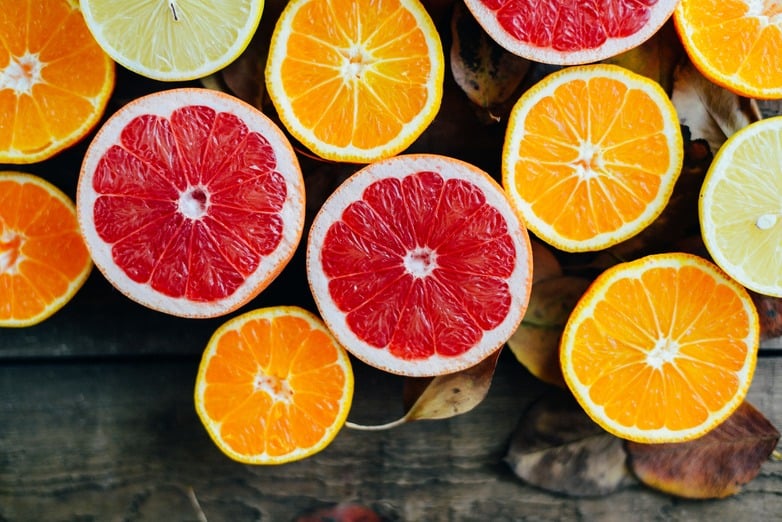Real Food Encyclopedia | Mandarin Orange
Tangy, sweet and perfectly snack-sized, Mandarin oranges (Citrus reticulata and related hybrids) include a large swath of varieties that range in size, sweetness and availability. Satsumas, tangerines and clementines are all in the mandarin family; however, “tangerine” usually refers to the varieties bearing a more darkly colored peel. All mandarins are unified by a single, valued characteristic: their loose-fitting skin, which makes them a cinch to peel and enjoy.
Did you know?
- In the U.S., tangerine originally referred to deeply colored mandarins that were originally imported to Florida from the Moroccan port Tangier, which lent the fruit its name.
- The name “mandarin” is taken from the title of counselors in the Chinese imperial courts who wore bright orange robes and headpieces with buttons that resemble the fruit.
- Mandarins are one of five original types of citrus from which all other citrus fruits are derived. The other originals include pummelos, citrons, kumquats and papedas (a primitive citrus grown mainly for its fragrant leaves).
What to look for when buying mandarin oranges
Unlike other citrus, mandarins cannot remain on the tree after ripening or they will develop off flavors. Likewise, mandarins left on the counter will not ripen further but will, instead, tend to ferment rather quickly, giving the fruit a musty taste.
Color may not always indicate ripeness. The fruit needs a good chill in the orchard to lose any green hue that may be lingering on the skin. If the fruit isn’t subjected to a cold snap before harvest, it will still be sweet and juicy, even if the skin hasn’t completely converted to a bright orange color. So don’t hesitate to grab a heavy, sweet smelling fruit even if it is a little green; it may not be the prettiest mandarin, but it may be the better choice.
Sustainability of mandarin oranges
Like other citrus fruits, mandarin oranges grow especially well in hot, dry climates where they rely on irrigation for their water needs. This means that they can be a water-intensive crop in drought-stressed regions like California, though they still need less water than other tree crops like nuts.
While citrus trees are hardy plants, growers do often spray trees with insecticides, especially in areas like Florida where insect pests spread citrus greening disease, which eventually kills trees. Consumer Reports ranks them as a “high risk” for pesticide exposure, but this is more important for farmworkers than eaters, who are exposed to few, if any, pesticides after peeling the fruit.
Mandarins do not ship or keep very well because of their low acidity and soft flesh. To extend their shelf-life, packers often spray the fruit with protective waxes. They also crate the mandarins with fungicide treated wraps or pads to retard spoilage. Over time, the fungicides can leach into the fruit.
To avoid exposure to pesticides, fungicides, and other potential toxic applications, look for fruit that is labeled “certified organic” or buy directly from the grower. Thoroughly washing and peeling the fruit will also limit one’s exposure to agricultural chemicals.
Seasonality
Mandarin oranges are available in the cooler months. The exact time of fruiting depends on the variety but you can rely on a steady stream of fruit in the market from late fall through early spring.
Geography
Mandarin oranges are native to Asia. Their spread throughout the west is an interesting one, as the fruit was introduced, nearly seed by seed, by individuals dedicated to growing their favored varieties. In the early 1800s, two varieties were introduced in England and were adopted by growers in the Mediterranean region, particularly in Italy.
Mandarins were first planted on U.S. soil in the mid 1800s when the then Italian Consul planted two varieties on the Consulate grounds in New Orleans. Interest in the mandarin spread from there to Florida and to neighboring Gulf states, which became the center of commercial production. From there, the mandarin made its way to California, which now grows over 90 percent of the nation’s crop.
Eating mandarin oranges
Storing mandarin oranges
It’s best to eat mandarin oranges as soon as you can – no more than a week from bringing them home. Refrigerate the fruit to slow spoilage and preserve flavor.
Cooking with Mandarin Oranges
Mandarins are usually eaten out of hand but can be processed for juice. They make a welcome addition to salads, but their small segment size makes them difficult to supreme away the pith to put into dishes. They are also used in marmalades and their skins are used to flavor liqueurs and confections and as key ingredients in cosmetics and perfumes.
Preserving
The juice of mandarins can be frozen for future use. The fruit can also be preserved as jam or marmalade or candied slices. They make a lovely liqueur. The segments are gorgeous canned in sugar syrup, sometimes with a bit of lavender or rose water to flavor them.
Nutrition and health
Mandarins are an excellent source of Vitamin C.


